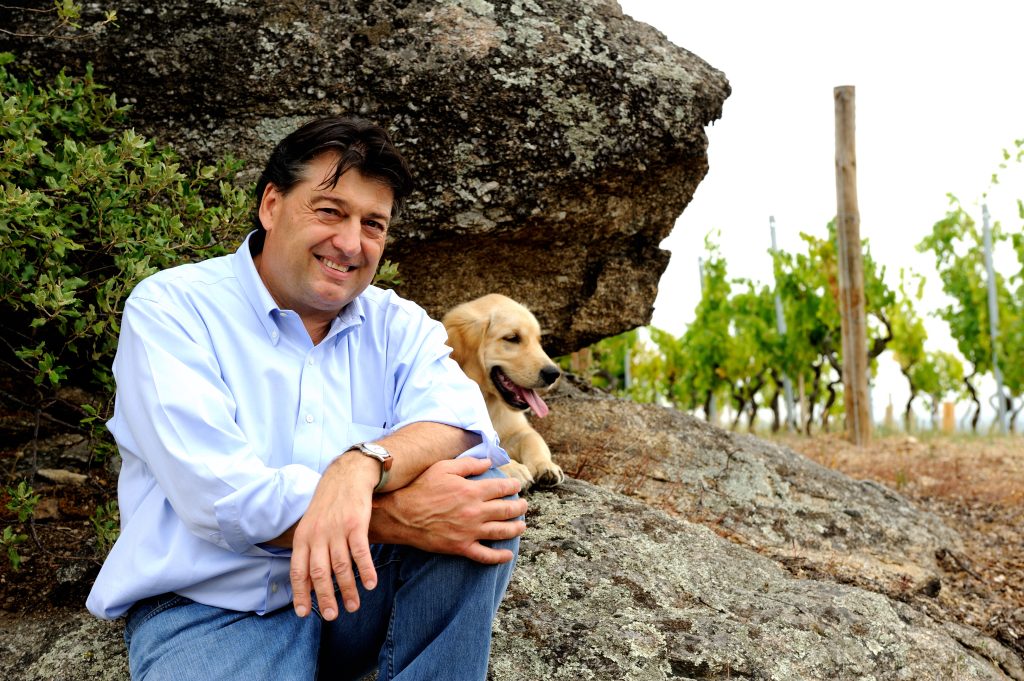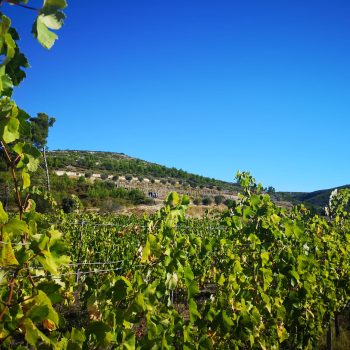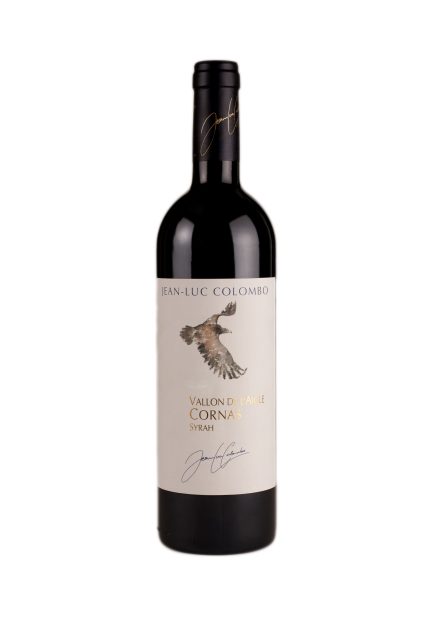This website uses cookies so that we can provide you with the best user experience possible. Cookie information is stored in your browser and performs functions such as recognising you when you return to our website and helping our team to understand which sections of the website you find most interesting and useful.
Jean-Luc Colombo on Cornas, the ‘hidden treasure’ in the Rhône
The highs and lows of the wine business are neatly illustrated by the small appellation of Cornas: often overshadowed by prestige-laden northern Rhône neighbour Hermitage, outstripped in volume terms by Crozes-Hermitage and St-Joseph. Before the World Wars, there were 500 hectares of vines here; afterwards, more like 50ha.

The gradual recovery that has taken root since then has been built on the potential of the area’s brittle granite soils (known locally as gore) dating back some 300m years, with Syrah vines often planted precariously on ancient terraces defying the steep slopes above the Rhône.
Among the producers that have spearheaded that renaissance, Jean-Luc Colombo is perhaps the best-known: an incomer from the Marseilles area (with wife Anne, from the Languedoc), he has been based in Cornas now for almost 40 years.
“When the two of them were looking for somewhere back in the ‘80s, they settled on Cornas as it was a very interesting place – Hermitage was very established, but this was kind of a hidden treasure to them,” explains Fanny Fouché, executive assistant to Jean-Luc Colombo, who has been with the business for 15 years.
“Still today Cornas is really a patchwork of vineyards and forests. There are Mediterranean influences, and lots of live oaks [holm oaks]. Even now, in the winter, Cornas is covered with green. There is lots of juniper, and Jean-Luc thinks it brings something extra to the wines in terms of sandalwood aromatics.”

Much has changed since the Colombos first visited Cornas four decades ago. Not least the climate, with a succession of hot recent vintages punctuated by the ‘classical’ 2021 – which, in a few decades’ time, may well be considered an outlier because of its cooler temperatures and later picking times.
“It’s a challenging vintage – and we didn’t have that for some years now,” says Fouché, unveiling barrel samples of three 2021 Cornas wines from Colombo: Terres Brûlées, Les Ruchets and La Louvée. “Pretty much since 2000, the winemakers in the northern Rhône don’t chaptalise the wine. But 2021 was a challenge because we had a lot of rain.”
For organically farmed vineyards – as Colombo’s are – that meant double the usual number of treatments during the growing season. “I know our vineyard manager pulled his hair out because, even if it’s organic agriculture, it’s a lot of work,” says Fouché. It also meant an unusually late start to the harvest – in modern terms – of 20 September. Compare that to 2020, when picking began 18 days earlier.
The 2021 wines – from Terres Brûlées’ blend of several plots to single-vineyard wines Les Ruchets La Louvée – share a fresh, sappy, perfumed quality at this very early stage in their lives (bottling is due in May or June). But the contrasts are as marked as the similarities.
The supple, savoury Terres Brûlées is what Fouché calls the “traditional” way of making Cornas: blending several plots from different parts of the Cornas slopes and vine ages (average about 40 years), while the site-specific wines illustrate the great variations possible thanks to shifts in altitude and orientation.
Les Ruchets – the original vineyard acquired by the Colombos in the 1980s – is a southeast-facing site on Les Chaillots, Cornas’ second slope, where terraces and staked vines are the norm. At an altitude of 150-250m, the wines typically veer towards the finer, more elegant end of the spectrum. In a cool year like 2021, there’s also a pronounced austerity thanks to the noticeable tannins.
La Louvée, meanwhile, is richer, riper and more concentrated, owing to its location on the lieu-dit of Les Côtes, closer to the village and at a height of about 150m. This is the kernel of Cornas – the chunk of vineyard that survived the losses of the early 20th century simply because it was closer to the village and therefore easier to farm.

The prettiness of the 2021 Cornas wines contrasts with other vintages – for instance, the 2020 iteration of Colombo’s other single-vineyard wine, Vallon de l’Aigle, only produced in outstanding years, or 2018 Les Ruchets and 2015 La Louvée. All share a ripeness, density and power that are signatures of warmer years.
This, in turn, poses challenges to winemakers. “In the past we were looking for phenolic ripeness, but now we have to choose because the alcohol rises so quickly and the phenolics might not be perfect,” explains Fouché. In practice, that means picking a little earlier to preserve balance.
“Now we try to avoid the high alcohol and then to work on the tannins through slow ageing in barrels. Syrah is a reductive variety, so the long time in barrel helps to open it up on the nose and to soften the tannins.” The wines typically spend about 20 months in oak – one-third of it new for the single-vineyard wines, none for Terres Brûlées.
Cornas will always be a small appellation. Today, there are 140ha or so of vines, of which Colombo has 13ha. A couple of hectares of are added each year, split between producers, but there’s a determination not to impose a monoculture on this diverse landscape, with a ban on ripping out the vegetation on the north-facing slopes and replacing it with vines. This helps preserve biodiversity and, with such easily eroded soils, recognises that landslides are a real hazard.
The process of recovery seen in Cornas has now radiated out to neighbouring Saint-Péray, where the Colombos also farm, and where the productive vineyard has expanded from 80ha to 120ha in recent times, with an emphasis on still, rather than sparkling, white wine. Here they make a bright, sunny white from 60% Roussanne and 40% Marsanne called La Belle de Mai – a nod to the par of Marseilles where Jean-Luc’s mother, Paulette, ran a restaurant.
As in Cornas, the renewed spotlight on Saint-Péray may be welcome on many levels, but it poses challenges for those – like the Colombos 40 years ago – looking to start out on their own. “Now, very quickly, everyone invested in Saint-Péray,” says Fouché. “Ten years ago, it was a place where young winegrowers could establish themselves, but now it’s not so easy.”

